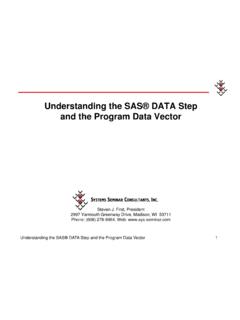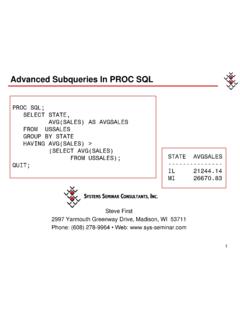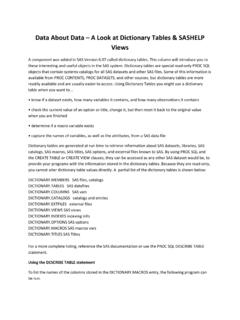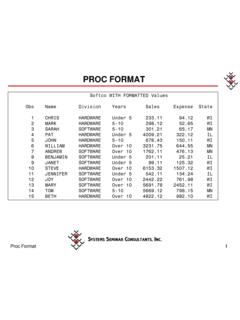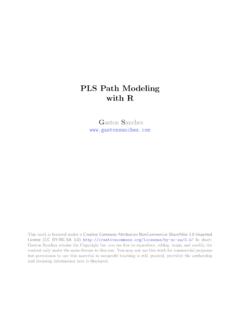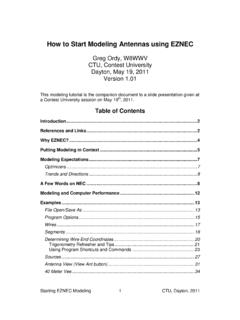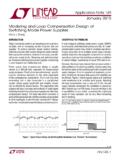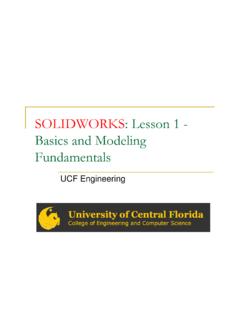Transcription of Advantages of Dimensional Data Modeling
1 Advantages of Dimensional data Modeling1 Advantages of Dimensional data Modeling2997 Yarmouth Greenway Drive Madison, WI 53711(608) 278-9964 Ten Reasons Why Your data Model Needs a hoc queries are difficult to construct for end-users or must go through database gurus. standard reports require considerable effort and detail knowledge of the is not integrated or is inconsistent across in data values or in data sources cannot be handled structure of the data does not mirror business processes or business data model limits which BI tools can be is no system for maintaining change history or collecting space is wasted on redundant who might benefit from the data don t use is tedious and ad hoc.
2 3 Advantages ofDimensional data ModelingPart 14 Part 1 - data Model Overview What is data Modeling and why is it important? Three common data models:de-normalized (SAS data sets)normalizeddimensional model Benefits of the Dimensional model5 What is data Modeling ? The generalized logical relationship among tables Usually reflected in the physical structure of the tables Not tied to any particular product or DBMS A critical design consideration6 Why is data Modeling important? Allows you to optimize performance Allows you to minimize costs Facilitates system documentation and maintenance The Dimensional data modelis the foundation of a well designeddata mart or data warehouse7 Common data modelsThree general data models we will review:De-normalizedExpected by many SAS proceduresNormalizedOften used in transaction based systems such as order entryDimensionalOften used in data warehouse systems and systems subject to ad hoc Dimensional model may be used for any reporting or query data even if not a data warehouse The Dimensional model is our focus DataSales Transaction TableEach row represents a sale transaction facts: number of items and dollarsAttributes of the sale.
3 Customer and product info, date, attributes of the sale are included with each transaction line data in SAS Procedures SAS data sets are commonly structured as de-normalized data Many SAS procedures that do grouping expect de-normalized data Low cardinality attributes are CLASS variables often character type High cardinality measures or facts are VAR variables numeric typePROC MEANS data =TRANSACTION SUM;CLASS STATE;VAR AMOUNT;RUN;Sale attributeSale fact10De-Normalized data A single row contains: Numeric facts or measurements Allattributes related to that measurementAll data is in a single redundancy:Directly correlated attributes, such as product number and product category, are repeated in each row Sale NumberProduct NumberProduct Category1S3200 Software2S3223 Software3H7005 Hardware11 Normalized DataData is broken up into related tables12 Normalized data Insert OptimizedA new transaction line involves gathering only the five data items in the Transaction Line table.
4 No other attribute look up is required. Redundancy is reduced:For example, Product Category is not repeated for each transaction Changes have less impact on the database:If a product category changes, only the Product table needs to be changed Query complexity is increased:Several tables must be related to each other in order to answer simple is the sum of sale amount for each state?13 Dimensional DataNumeric sale facts Attributes or dimensions of the saleSome redundancy: state attributes are carried for each customer14 Dimensional data The central fact table is surrounded by dimension tablesStar schema Table relationships are only one level deepNo more than two tables need to be joined together for common business questions and aggregations What is the sum of sale amount for each state?
5 15 Facts and Dimensions Key terms: Fact and Dimension Fact:High cardinality, numeric measure of some event such dollars for a many rows, one per business event. Dimension:Low cardinality, typically character, attribute of a many columns, one per attribute of Dimensional model is made up of facts and dimensions16 What can Dimensional Modeling do for your organization? Bring together data from many different sources and create a single, consistentuser view. Support the ad hoc queriesthat arise from real business questions. Maximize flexibility and scalability. Optimize the end-user s Next?Part 2 The Dimensional data Model Facts and dimensions explained Granularity Why use surrogate keys? Drill down and drill across queries in Dimensional data Introduction to slowly changing dimensions Benefits of Dimensional Modeling 18 Advantages ofDimensional data ModelingPart 219 Fact and DimensionsDimensional Modeling implies two distinct types of data are stored two types of tables20 Facts and DimensionsA fact A business measurement, amount, or event Typically numeric, continuously valued, and additive Something we analyze: What were total salesby state?
6 Some facts:revenue dollars, unit counts, event countsA dimension Context surrounding a fact: who the fact applies to; when, where, and under what conditions the fact was measured Usually a discrete character or numeric value Static or slowly changing Something we use to identify or group data : What were total sales by state? Some dimensions:customer, date, time, location21 Fact TableElements of a fact table: Fact:the measure(s) of interest Dimensionforeign key:Key to a row in a dimension tableSales Transaction Fact TableDate key (FK)Product key (FK) Channel key (FK)Promotion key (FK)Customer ID (FK)Sales quantitySales dollar amountCost dollar amount22 Dimension TableThe dimension table represents an entity of interest to the business:Customer, product, vendor, promotion, : Primary key(PK):Unique for each row in the table.
7 It should be a surrogate key, , have no inherent meaning. The value of the dimension key is what s stored in the fact table. Dimension attributes: A set of variables that encompass what is known about the business DimensionCustomer ID (PK)Customer NameCity State ZipDate of first contact23 Fact-Dimension data ModelProduct DimensionProduct key (PK)Product Description Category DescriptionPromotion DimensionPromotion key (PK)Promotion namePromotion typePromotion start datePromotion end dateDimensionCustomer ID (PK)Customer NameCity State ZipDate DimensionDate key (PK)DateDay of weekCalendar monthCalendar yearHolidayChannel DimensionChannel ID (PK)Channel nameChannel descriptionChannel typeSales Transaction Fact TableDate key (FK)Product key (FK) Channel key (FK)Promotion key (FK)Customer ID (FK)
8 Sales quantitySales dollar amountCost dollar amountThis relationship pattern is called a star schema. 24 Granularity Granularity is the level of detail in a fact table Granularity is the combination of all dimensionsThe grainof the previous table is:DateProductChannel PromotionCustomer Only facts with the same grain ( described by the same dimensions) can coexist in a fact table. Granularity can always be reduced through aggregation, but can never be Transaction Fact TableDate key(FK)Product key (FK) Channel key (FK)Promotion key(FK)Customer ID(FK)Sales quantitySales dollar amountCost dollar amountPromotion Event Fact TableDate key(FK)Promotion key(FK) Medium key (FK)Customer ID(FK)Count variableEach line is a sales transaction one customer buying some quantity of one line is a promotion event one customer being offered one promotion.
9 The fact tables represent two different business processes. The fact tables each have a unique set of foreign keys, though some foreign keys match (red).26 Surrogate KeyEach row in a dimension table should be identified by a surrogate primary key. A surrogate key has no inherent ID (PK)Channel NameChannel DescriptionChannel Type1042 Store #0720St. Louis Retail StoreRetail Store1043 Store #0721 Albuquerque Street KioskKiosk1044 Store #0722 Scranton Retail StoreRetail Store1045 Store #0720St. Louis Outlet StoreOutlet Store The two records for Store #0720 (natural key) can coexist without conflict because each has a unique surrogate key. Surrogate keyNatural key27 Surrogate KeyBenefits of using a surrogate key: Surrogate keys make it possible to integrate data from sources that use different forms of a natural key.
10 Allow the use of legitimate unknown and null natural keys, or natural keys with special meanings. Natural keys may be reused. For example, transaction numbers may be recycled six months after the transaction. A unique surrogate key value distinguishes between two like-numbered Down and UpDrill down means displaying facts at a lowerlevel of you drill down you adddimensional :I am viewing sales by state and I want to drill down to the zip code level within up is the reverse. Drill up reduces the number of Dimensional up is :I am viewing sales state but want sales aggregated by multi-state Up and DownJune 25, 2008E-storeGeneralMerchandisePreferredGo ldTulsaJune 25, 200830 Drill AcrossDrill Across means: Join two or more facts that share the same the How many customers who purchased products this December were notified of the Year End Clearance promotion by e-mail?
